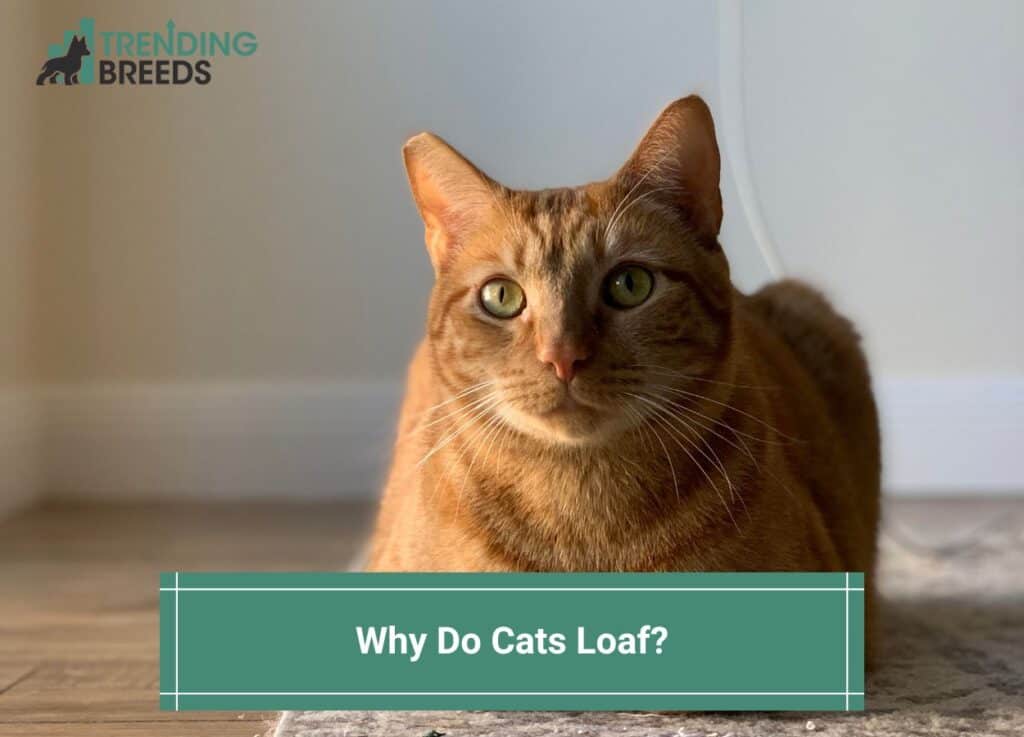
Cats are quirky, and we love it. You must have seen the many memes and videos of quirky cats all over the internet. Sometimes, these pictures involve a cat in a “loaf” position. So, why do cats loaf?
Preserving their body temperature requires a lot of work for cats, especially when they are in a much cooler place than they prefer.
Cats must employ a wide variety of strategies to maintain their core body temperature.
Some common methods of preventing heat loss include snuggling up in blankets, lying in a sunny spot, and, of course, the loaf posture.
Keep reading below for more information.
Before you scroll further down this guide, check out these other cat-related articles: Why Does My Cat Smell My Breath? and Why Does My Cat Meow When I Sneeze?.
Table of Contents
What’s a Cat Loaf?

Cats, when sitting with their feet tucked beneath them and their tails tucked or curled around their bodies, look like loaves of fresh bread.
The similarity is striking when a cat gets into this position inside a tiny box, with the top overflowing from its edges like rising dough. Hence, the expression “cat loaf” was coined.
Since its debut in 1999 on Usenet newsgroups, the term “cat loaf” (or “catloaf”) has acquired widespread usage.
It later became a meme that gained traction in the 2010s on social media platforms like Reddit, Twitter, and Facebook. Some other variants are “bread cat,” “potato cat,” and “tugboat cat.”
In fact, cats have become Internet celebrities, with their website (kittyloaf.com) dedicated to collecting pictures of them in the endearing loaf position.
Are you curious to see what a cat in the loafing position looks like when viewed from below? You can get your daily dose of serotonin by doing a Google image search for “hover cat” on a glass table.
Loafing is a common way cats take in their environment while maintaining a calm demeanor. Eyes will be wide open or half closed, and the cat’s head will be held in an erect position.
We’re all familiar with the basic loafing position, but variants exist. Any cat or kitten of any age is capable of adopting these poses.
- If a cat is in a full loaf position, its tail is usually tucked beneath its body or curled securely around it.
- The cat in a partial loaf may have somewhat crooked elbows. The forepaws can be tucked under or laid flat.
- A cat is said to be in a loaf boat position when one of its elbows is outstretched in front of the other.
- Cats can also assume the Sphinx position, named after the ancient Egyptian mythological creature. They sit flat on their bellies and resting on their back haunches with one or both front legs somewhat extended.
- When a cat is tired, its head may begin to droop, resulting in a face loaf. However, if your cat assumes the face loaf position, it could indicate that it is sick.
Reasons Why Your Cat is Loafing

When a cat loafs, it usually means it’s relaxed and happy. It isn’t comfortable enough to lie on its back, which would expose its stomach, but it isn’t experiencing any feelings of tension or worry, either.
Your cat’s level of loafing activity may provide insight into its general health under specific conditions.
Therefore, you need to educate yourself on this behavior, why cats engage in it, and how to determine why your cat is loafing around the house.
Cats often adopt the loaf stance for the following reasons:
Relaxation
What exactly does the “cat loaf” stance mean? When cats are relaxed, they often assume the loaf position. Cats are notorious for only lounging in the most luxurious of settings.
While it may not be a comfortable position for you, cats enjoy resting with their arms crossed over their bellies.
Cats find it quite cozy due to their unique skeletal structure. To relieve stress on its paws, legs, or tummy, a cat may choose from various lounging options. This posture is comparable to crossing one’s arms across one’s chest when sitting.
If you don’t want your arms hanging at your sides, this can be the most comfortable way to stand. You can probably put your cat’s loafing down to this easy explanation.
Safety
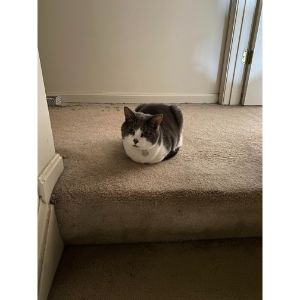
Cats will loaf around when they feel safe doing so. When a cat hides its paws under its body, it shows no sign of aggression. If it did, it would be positioned to bolt at the first opportunity.
However, your cat isn’t fully comfortable either. It would lie on its side, exposing its belly, if it were. Your cat feels safer if it doesn’t expose its tummy.
Thermoregulation (Heat Conservation)
Using the nutrients they consume, all mammals generate their own internal heat.
The internal organs of a mammal can only function between 95- and 100-degrees Fahrenheit; this is, therefore, an essential requirement.
Food is a valuable resource since it is used to generate body heat. A cat’s instinct is to keep warm. In this position, your cat will have its paws tucked beneath its body.
Keeping the parts of your body close to your body is an excellent way to conserve heat.
The body’s core temperature is lower at the extremities because they are further from the heart. Thus, a cat is more susceptible to frostbite on its toes.
Cats often curl their tails around their backs for the same reason, which is why you sometimes see this behavior. So, if your cat feels chilly, you will most likely find it doing this.
Paw Injury
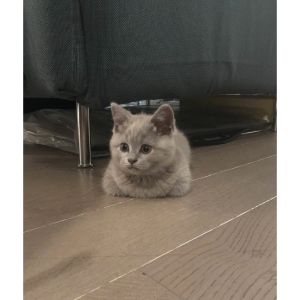
If your cat’s paw is injured, it may try to hide it by curling it beneath its body. Your cat would rather hide its injured paw than risk your touching it.
Overgrown nails often curl back under the paw, making it hard for your cat to move about. It’s also possible that your cat’s paw pad is cracked, cut, or otherwise injured.
Do not pull the paw out from under the cat if you are worried it has been injured while loafing. Most cats don’t enjoy it when people touch their paws, and doing so can cause much more harm.
You can tell if your cat’s paw has been injured if it has a limp or doesn’t like to be touched near one of its paws.
Illness
If your cat has a condition like chronic kidney disease (CKD), you might notice it behaves differently than usual. It’s a different kind of loafing. The British Medical Journal reports that CKD is widespread in senior cats.
The term “meat loafing” is sometimes used instead of “loafing” to describe this posture.
The cat’s head is tilted differently, which is the primary difference. A cat’s natural posture when loafing is its head held high and its eyes forward.
A cat with CKD may lie on its back with its head pointing downward, indicating extreme tiredness. Loafing allows it to rest with its paws tucked under its belly, relieving stress on its vital organs.
Crashing, or loafing, is a specific symptom of chronic kidney disease in cats. Crashes are prevalent in CKD cats, and complete organ failure can occur quickly even after a long period of treatment.
Just Because

Sometimes, there’s no rhyme or reason why your cat wants to sit like a loaf. It alternates between wanting to lie on its back and its belly.
People are the same way; even if sleeping on your back or side is comfortable, there are occasions when you prefer one over the other.
Your cat is probably healthy and just lazy. When a cat assumes the cat loaf position, it’s usually because it feels secure or trying to keep warm.
When is Cat Loafing an Issue?
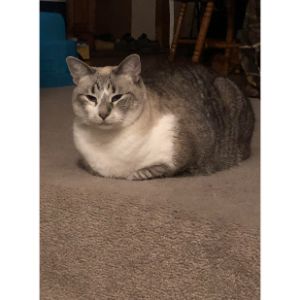
Loafing is a common behavior in cats, and it’s no surprise if your feline friend prefers to do so in soft, warm places like your carpet by the window or a freshly dried stack of clothes.
However, you should look into the matter further if your cat is frequently seen loafing at the center of the floor or on a chilly, unpleasant surface.
A veterinarian should examine your cat if you see any of the following symptoms: hiding, reduced appetite, litter box problems, lethargy or weakness, abnormal gait (such as a limp), yowling in pain, or breathing problems.
If your cat is still active at other times of the day, you don’t need to worry about him or her not receiving enough exercise or becoming less mobile because of cat loafing.
Frequently Asked Questions
Do cats loaf in the wild?
Lions and panthers can sometimes be seen loafing in the wild.
Why does my cat loaf on my chest?
Your cat likes you and finds you comfortable to sleep on. They probably also like the warm from your body.
Why does my cat headbutt me?
Your cat is looking for attention, and wants to alert you to either a need for food, water, or pets.
So Why Do Cats Loaf?
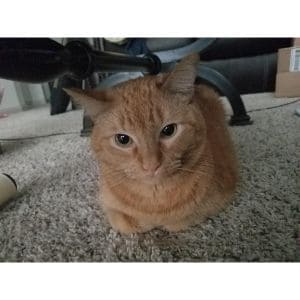
While there are many reasons why your cat may be loafing, most of these are completely harmless.
So, the next time you find your kitty loafing in the sun by the window, don’t panic and simply enjoy the quirkiness. It’s why we “loaf” them (get it?!).
If you find this guide, “Why Do Cats Loaf,” informative and helpful, you can check out these other cat-related articles from our team:
You can learn more about this topic by watching “Why do Cats Sit in a Loaf | Inverse” down below:




